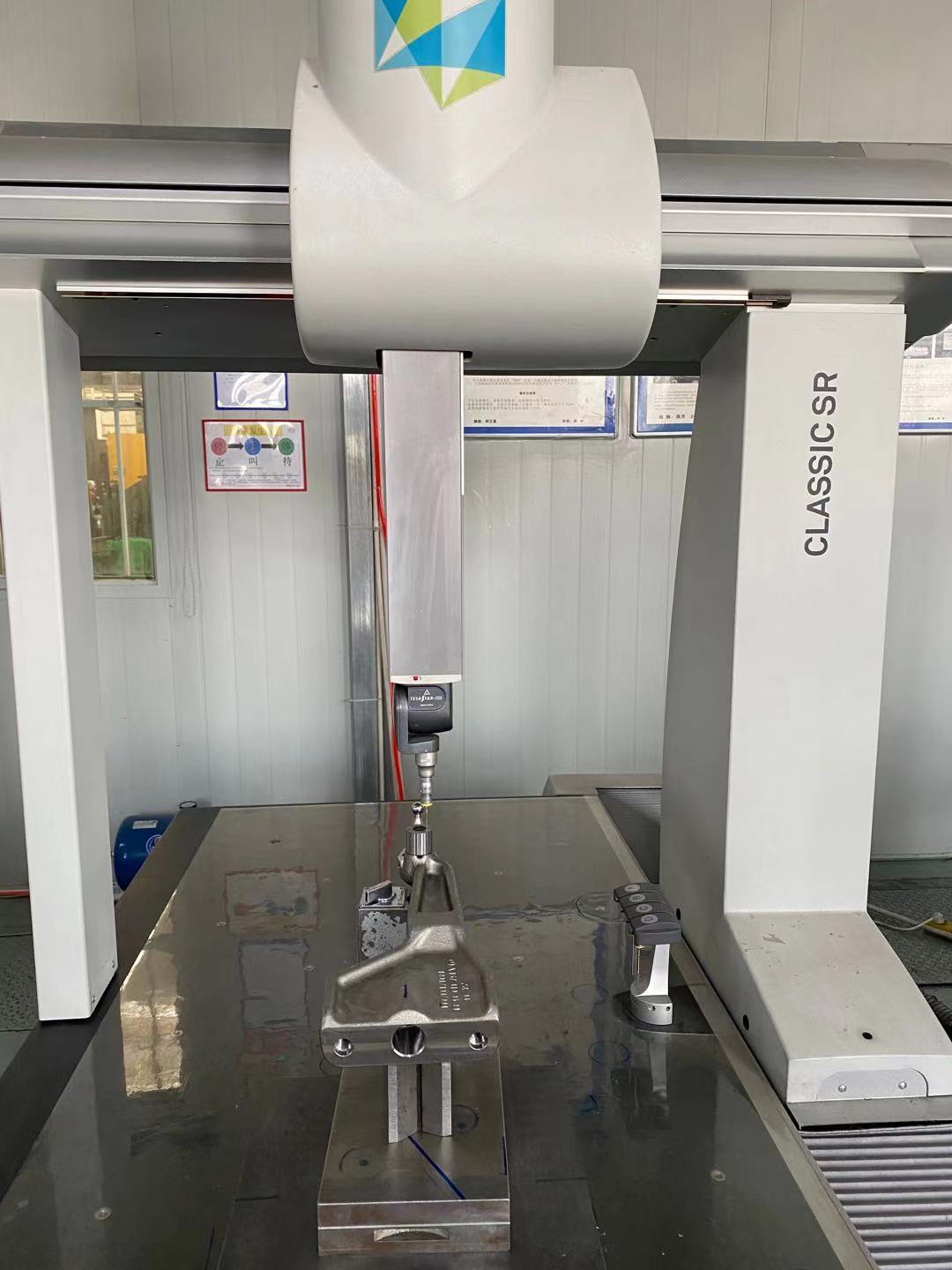The solution of heating defect and uneven microstructure performance defect of forging blank
2022-12-06
I. Analysis and solution of defects of overheating, overburning and uneven temperature in forging blank processing:
When the heating temperature is too high or the high temperature stays for too long, it is easy to cause overheating and overburning. Overheating significantly reduces the plasticity and impact toughness of forged materials. In the process of overfiring, the grain boundaries of the material oxidize or melt violently, and the overall deformation ability is lost.
When the heating temperature distribution is seriously uneven, it indicates that the temperature difference between inside and outside the forging blank, before and after the forging blank and along the length direction is too large, resulting in uneven deformation, eccentric forging and other defects, also known as under-heating.
There are samples with 10% (volume fraction) nitric acid aqueous solution and 10% (volume fraction) sulfuric acid aqueous solution corrosion, metallographic microscope (LM) observation, coarse grains, grain boundaries are black, matrix gray white, showing the characteristics of overheating.
There are cracks caused by overburning of bearing steel forgings, there are melting traces and low melting point phases on the grain boundary, and the cracks spread along the grain boundary. Some samples were eroded with 4% (volume fraction) nitrate alcohol solution and showed black grain boundaries, which were obviously burned out, and the forging blank was overburned and discarded.
The countermeasures to prevent the heating defect of forging blank are:
1. Strictly implement the correct heating specifications;
2. Pay attention to the way of loading furnace to prevent local heating;
3. Adjust the thermometer table, carefully carry out heating operation, control the flow of furnace temperature and furnace gas, and prohibit uneven heating.
Two, uneven organizational performance:
Due to its large size, many processes, long cycle, uneven process and many unstable factors, large forging parts often lead to serious uneven structure and performance, and cannot pass the mechanical property test, metallography inspection and no damage detection. Due to the segregation of chemical composition, accumulation of inclusions and various porous defects in the ingot; When heating, the temperature changes slowly, the distribution is not uniform, the internal stress is large, the defects will be more; High temperature forging for a long time will produce local stress and deformation, plastic flow state, compaction degree and deformation distribution are different. In the cooling process, the diffusion process is slow, the microstructure transformation is complex, and the additional stress is large. The above factors may cause serious uneven tissue performance and unqualified quality.
Measures to increase the uniformity of forging blank:
1. Adopt good smelting and casting technology to increase the metallurgical quality of steel ingot;
2. Controlled forging and cooling technology is adopted to optimize the process and increase the technical and economic level of forging parts production.

When the heating temperature is too high or the high temperature stays for too long, it is easy to cause overheating and overburning. Overheating significantly reduces the plasticity and impact toughness of forged materials. In the process of overfiring, the grain boundaries of the material oxidize or melt violently, and the overall deformation ability is lost.
When the heating temperature distribution is seriously uneven, it indicates that the temperature difference between inside and outside the forging blank, before and after the forging blank and along the length direction is too large, resulting in uneven deformation, eccentric forging and other defects, also known as under-heating.
There are samples with 10% (volume fraction) nitric acid aqueous solution and 10% (volume fraction) sulfuric acid aqueous solution corrosion, metallographic microscope (LM) observation, coarse grains, grain boundaries are black, matrix gray white, showing the characteristics of overheating.
There are cracks caused by overburning of bearing steel forgings, there are melting traces and low melting point phases on the grain boundary, and the cracks spread along the grain boundary. Some samples were eroded with 4% (volume fraction) nitrate alcohol solution and showed black grain boundaries, which were obviously burned out, and the forging blank was overburned and discarded.
The countermeasures to prevent the heating defect of forging blank are:
1. Strictly implement the correct heating specifications;
2. Pay attention to the way of loading furnace to prevent local heating;
3. Adjust the thermometer table, carefully carry out heating operation, control the flow of furnace temperature and furnace gas, and prohibit uneven heating.
Two, uneven organizational performance:
Due to its large size, many processes, long cycle, uneven process and many unstable factors, large forging parts often lead to serious uneven structure and performance, and cannot pass the mechanical property test, metallography inspection and no damage detection. Due to the segregation of chemical composition, accumulation of inclusions and various porous defects in the ingot; When heating, the temperature changes slowly, the distribution is not uniform, the internal stress is large, the defects will be more; High temperature forging for a long time will produce local stress and deformation, plastic flow state, compaction degree and deformation distribution are different. In the cooling process, the diffusion process is slow, the microstructure transformation is complex, and the additional stress is large. The above factors may cause serious uneven tissue performance and unqualified quality.
Measures to increase the uniformity of forging blank:
1. Adopt good smelting and casting technology to increase the metallurgical quality of steel ingot;
2. Controlled forging and cooling technology is adopted to optimize the process and increase the technical and economic level of forging parts production.

X
We use cookies to offer you a better browsing experience, analyze site traffic and personalize content. By using this site, you agree to our use of cookies.
Privacy Policy



